systems before ai
Why AI Has Made Current Server Hardware and Application Software "Legacy Dinosaurs"
Image of the world’s largest ‘mega’ data center planned for South Korea in $35bn project
Executive Summary
In an era dominated by artificial intelligence (AI), the computing infrastructures that have powered enterprises for decades—characterized by bulky servers, expansive databases, and costly proprietary software—are rapidly becoming relics of the past. These systems, rooted in technology developed over 20 years ago, prioritize redundancy and scale at the expense of efficiency, cost, and adaptability. In contrast, modern AI-driven approaches leverage bots, forms, AI agents, open-source Python environments, and advanced hardware like neural processing units (NPUs) and graphics processing units (GPUs) to create lean, agile, and cost-effective solutions.
This white paper explores the limitations of legacy systems and introduces a paradigm shift toward AI-centric computing. By adopting purpose-built AI Servers with minimal databases, solid-state storage, and AI tools that automate data handling and code generation, businesses can achieve superior performance, reliability, and scalability at a fraction of the cost. For a $20 million company, this translates to a compact, failure-resistant system that outperforms traditional setups while embracing the open-source ethos of the AI revolution.
Introduction: The Evolution of Enterprise Computing
Enterprise computing has long relied on robust, centralized servers designed for high availability and data-intensive operations. Companies like Dell and HP have dominated this space with hardware featuring large drive bays, redundant power supplies, and extensive cooling systems. These designs were necessary in an age when mechanical hard drives failed frequently, databases ballooned with unstructured data, and reporting required massive computational overhead.
However, the AI revolution—fueled by breakthroughs in machine learning, natural language processing, and generative AI—demands a rethink. Today's AI models can write code on demand, automate repetitive tasks via bots and agents, and process data in real-time using lightweight, open-source tools. Newer hardware technologies, such as NPUs for efficient AI inference and GPUs for parallel processing, enable compact systems that handle complex workloads without the bloat of legacy infrastructure.
This shift is not just technological; it's economic. Expensive licenses for databases (e.g., Oracle, SQL Server) and applications add unnecessary overhead, while open-source alternatives like Python libraries and local LLMs (large language models) democratize access to powerful capabilities. The result? A move from monolithic servers to distributed, AI-orchestrated ecosystems that are more resilient, scalable, and affordable.
The Limitations of Traditional Server Infrastructures
Traditional servers and applications, built on paradigms from the early 2000s, are ill-suited for the AI-driven future. Here's why:
Hardware Inefficiencies and Reliability Issues
Storage Overkill: Legacy servers feature expansive bays for multiple mechanical hard drives, often configured in RAID 6 setups with spares for redundancy. These drives are slower (typically under 200 MB/s read/write) and prone to failure due to moving parts. The result is a bulky system that consumes excessive space and power.
Power and Cooling Redundancy: Redundant power supplies were essential when failures were common, but they add complexity and cost. Intel-based CPUs generate significant heat, necessitating large fan arrays that increase noise, energy use, and failure rates.
Scale-Driven Complexity: To manage growing data volumes, these systems rely on massive databases that store everything in one place. This leads to higher heat output, requiring more infrastructure like data centers with advanced HVAC systems. Running reports or analytics on such databases exacerbates the load, demanding even more resources.
Software and Licensing Burdens
Proprietary Databases and Applications: Enterprises pay premium licenses for databases that enforce rigid structures and require specialized administrators. Applications built on these platforms are often inflexible, unable to adapt to AI workflows without costly integrations.
Reporting and Data Management Challenges: Generating insights from disparate sources (e.g., multiple spreadsheets) involves manual ETL (extract, transform, load) processes or expensive BI tools. This inefficiency stems from a lack of AI integration, forcing reliance on human intervention or outdated scripting.
In summary, these systems are optimized for an era of scarcity in computational power and data processing. They prioritize brute-force redundancy over intelligence, leading to high capital expenditures (CapEx), operational expenditures (OpEx), and environmental impact.
The AI-Driven Alternative: Bots, Agents, Forms, and Purpose-Built AI Servers
Enter the modern approach: a ecosystem centered on AI servers, bots, forms, and agents that leverages open-source tools and cutting-edge hardware. This model eliminates unnecessary complexity by distributing intelligence across lightweight components.
Core Components
Bots and AI Agents: These are small, virtual or appliance-based programs running in Mosaic or Python environments. Bots automate repetitive tasks, such as pulling data from forms or external systems, extracting and reformatting it for human or machine use. AI agents extend this by intelligently processing inputs, making decisions, and interfacing with other tools.
Forms and Data Ingestion: User-friendly forms capture data dynamically, feeding it directly into AI workflows without intermediate storage bloat.
AI Servers: Purpose-built machines replace traditional servers. A typical setup for a $20 million company includes:
An AMD processor for efficient general computing.
Two NVIDIA GPUs (or NPUs for AI-specific tasks) to accelerate parallel processing and model inference.
Solid-state drives (e.g., 4TB NVMe with 7,100 MB/s read/write speeds) that are monitored in real-time and virtually failure-proof due to no moving parts.
Liquid cooling to extract heat efficiently, resulting in a cool, compact system (e.g., pedestal-mounted) with dual 10 Gigabit interfaces for connectivity.
Minimal to zero traditional databases; data is stored in accessible files (e.g., CSV, Excel) or lightweight transaction stores optimized for AI access.
Workflow Example: AI-Powered Reporting
Consider a company needing reports from data across 20 spreadsheets:
1. Bots or agents ingest the files into a Python environment.
2. Using open-source libraries like Pandas, data is cleaned and analyzed via code executed on-the-fly.
3. An LLM (e.g., open-source model like Llama) is provided with a tool to run Python code, generating insights or visualizations dynamically.
4. The AI server stores results in human-readable files, accessible via a GUI. No massive database required—AI handles querying and synthesis.
This process is entirely open-source, with AI capable of writing any needed code, reducing development time and costs.
Hardware and Software Advantages
NPU/GPU Integration: Newer chips like those from NVIDIA or AMD's NPUs enable on-device AI processing, eliminating cloud dependency and latency.
Open-Source Python Ecosystems: Libraries such as NumPy, SciPy, and TensorFlow provide enterprise-grade capabilities without licenses. AI models can generate code autonomously, adapting to new requirements.
Redundancy Simplified: Instead of complex RAID arrays, buy two identical AI servers for failover—far cheaper and easier to manage.
Benefits of the Shift
Adopting this AI-centric model yields transformative advantages:
Cost Savings: Eliminate expensive database licenses and reduce hardware footprint. A single AI server can handle workloads that once required racks of traditional servers.
Reliability and Efficiency: Solid-state storage and liquid cooling minimize failures. Lower heat means longer lifespans and reduced energy costs.
Scalability and Agility: AI agents scale dynamically, handling variable workloads. Open-source tools allow rapid iteration, with AI writing code to meet evolving needs.
Sustainability: Compact systems consume less power and space, aligning with green computing initiatives.
Democratization: Small to medium enterprises (e.g., $20M companies) can access enterprise-level capabilities without big-tech dependencies.
Challenges and Considerations
While promising, this transition requires upskilling in AI tools and ensuring data security in file-based storage. However, open-source communities provide robust solutions, and AI's self-improving nature mitigates skill gaps.
Conclusion: Embracing the Future
The AI revolution marks the end of an era for traditional servers and applications. Built on outdated assumptions of data scarcity and computational limits, these systems are being outpaced by intelligent, efficient alternatives. By leveraging bots, agents, forms, AI servers, NPU/GPU technology, and open-source Python environments, businesses can build resilient infrastructures that are not just modern but future-proof.
Companies ready to innovate should assess their current setups and pilot AI-driven solutions. The result? A leaner, smarter enterprise poised to thrive in the AI age.
For more information or to discuss implementation, let's talk. Load Talk





